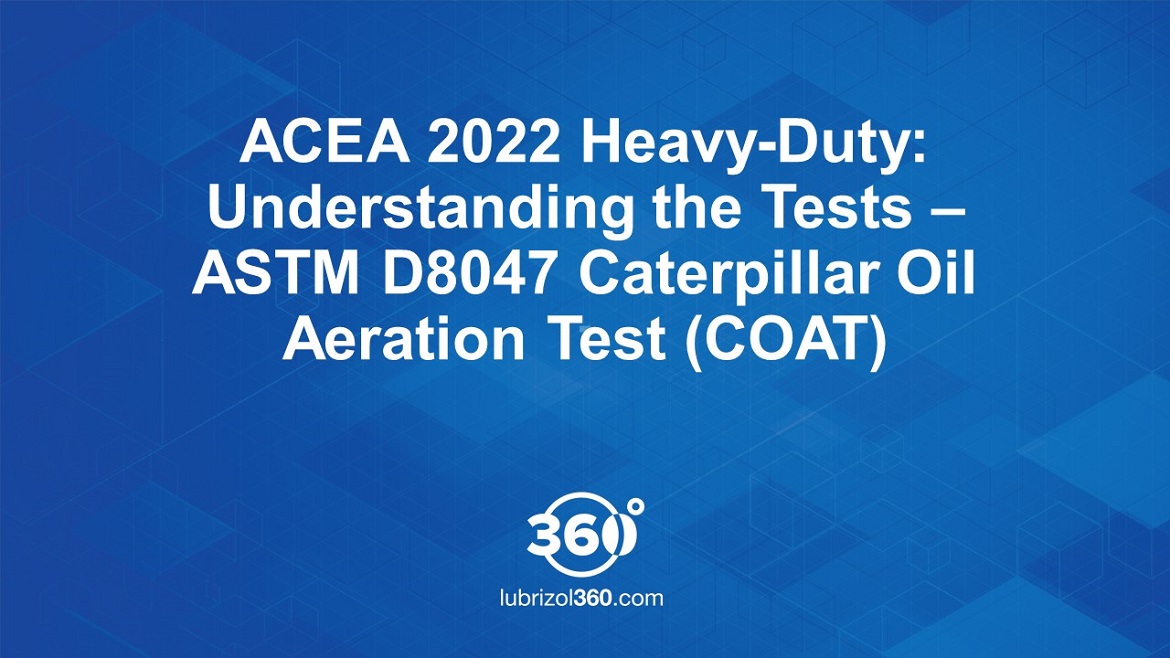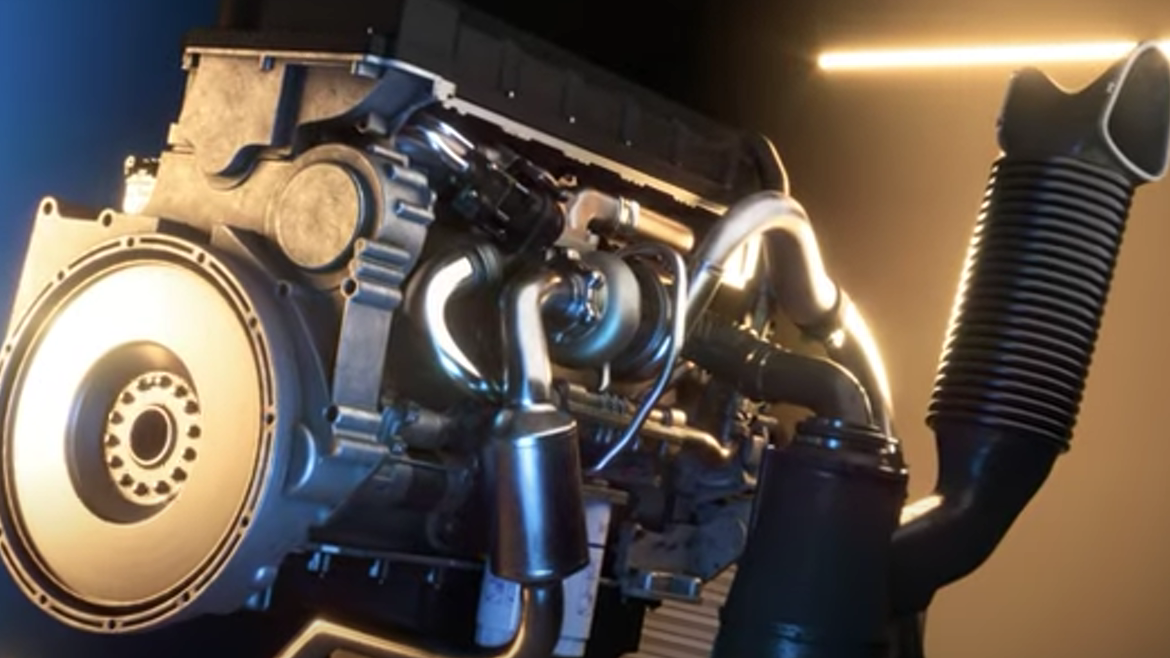The Caterpillar C13 Direct-Injected Turbocharged automotive diesel engine (ASTM D8047) is the standard test method to evaluate an engine oils resistance to aeration. This test is included within the ACEA Heavy-Duty Engine Oil Sequences upgrade. Applicable to the ACEA E8 and E11 categories, it is commonly referred to as the Caterpillar-C13 Engine-Oil Aeration Test (COAT).
In addition to the ACEA E8 and E11 categories, the COAT is also expected to be included in two new ACEA F categories, ACEA F8 and F11, for enhanced fuel-efficient engine lubricants with high temperature high shear (HTHS) viscosity of 2.9 – 3.2 cP (mPa.s). The release date for the new F class is uncertain at this time.
As well as delivering performance and protection to the engine hardware, engine lubricants often perform vital hydraulic fluid operations. Where hardware designers use the oil to actuate fuel injectors or hold open or hold closed valves, the lubricant must function as an efficient hydraulic fluid throughout the drain interval.
When air becomes entrained with the engine lubricant, the excessive air makes the oil compressible. This impacts the oil’s ability to be a hydraulic fluid and negatively affects the engine timing characteristics and engine operation.
The COAT evaluates an engine lubricant's resistance to aeration in automotive diesel engines. The COAT was developed as a replacement for the engine oil aeration test (EOAT), or ASTM D6894, primarily due to reduced availability of EOAT test parts. The COAT aims to provide a more reliable measurement of the ability of a lubricant to resist aeration during engine operation, compared to the EOAT.
The COAT was first introduced into the API CK-4 and FA-4 categories in 2016; with the same limits planned in the relevant ACEA categories. The COAT is conducted under a high engine speed of 1800 revolutions per minute with zero-load conditions, using a 320 kW turbocharged Caterpillar C13, direct-injection, six-cylinder diesel engine designed for heavy-duty, on highway truck applications.
To measure air entrainment, the Micro Motion uses the Coriolis Effect to determine the density of the engine lubricant. The Micro Motion is directly attached to the COAT engine and lubricant is pumped to and from the machine in an internal circulating lubricant loop. The change in density is calculated through a comparison of the fresh, or unused, oil density (established before the COAT is started) versus all the density measurements taken by the Micro Motion machine during the 50 hours of testing. The lower the density change between fresh oil and COAT running lubricant, the lower the amount of air entrainment which demonstrates the lubricant’s ability to resist aeration.
Engine lubricants meeting the COAT requirements must be correctly formulated to ensure they deliver the performance and protection demanded for today’s modern heavy-duty diesel engines, where ACEA E8 or E11 industry performance is demanded by the OEM.
Our View
Surpassing, rather than just meeting, the performance demands of the COAT enables oil marketers to deliver higher-performing engine lubricants that exceed the new ACEA specifications, providing additional protection and performance benefits to heavy-duty commercial vehicles around the world.

For more information on the ACEA 2022 upgrade for heavy-duty diesel engines, click here or contact your Lubrizol representative.









